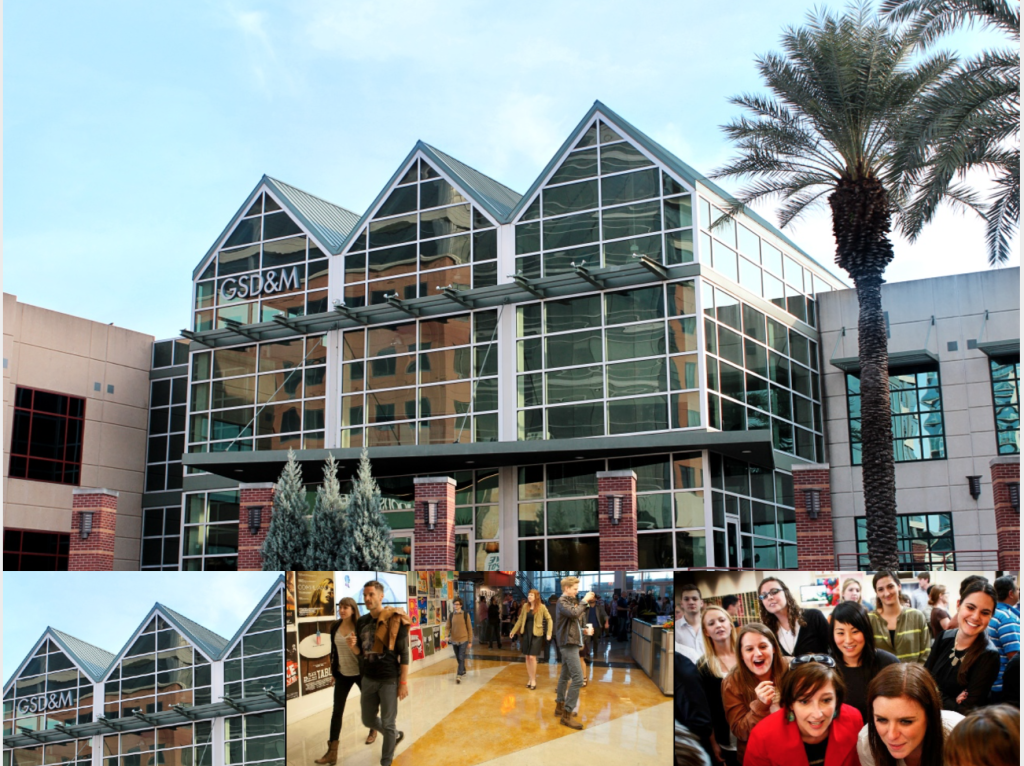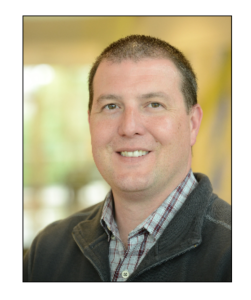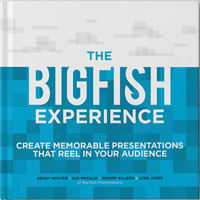The Art of Agency Pitches with GSD&M’s Keith Jose
In this post, our CEO/Founder, Kenny Nguyen, got the chance to interview Keith Jose, Director of Business Development at GSD&M; learning about his story and how GSD&M researches, pitches, and works with some of the world’s most respected brands. GSD&M is located in Austin, Texas, and is a fully integrated advertising agency that’s helps brands like BMW, Whole Foods, and Chipotle win by activating their core purpose, establishing strong brand personalities, building sales, and creating long-term success.

Kenny Nguyen: So Keith, tell us about what you do at GSD&M and how you’re able to be in the position to do it.
Keith Jose: Sure. So I met GDS&M’s founder, Tim McClure, one day when I was waiting tables; he told me he’d flip for the tab – double or nothing. I said, “Okay we’ll do it, but only if you get me an interview at GSD&M.” And he said, “Nope, if you lose you don’t get anything and we’re leaving.” So we flipped it. I lost and ripped up his tab. I think he had fun with that and left the restaurant, but came back with his card a little later telling me to send in my resume. I had to go through five or six interviews, but when I got the job I went straight to him and said, “Thank you for taking a chance.” Thankfully, I found my way to new business early. I’d make a horrible account person, because I need that stimulation of new energy and categories, while learning something new about a business. I push creativity in my team, so that it’s not just getting new business, but more of how we’re tackling problems, doing research, and building a presentation. You don’t want to reinvent the wheel, but at the same time you want to act like every presentation’s an opportunity to showcase creativity. I think clients are drawn to that. When we pitched to Chipotle last year I think a big reason we won was because they visited our agency. We have a very creative expression of our culture, which meshed really well with theirs. We showed them how creative we were, and it just worked out.
Kenny: That’s awesome! So you’re the director of new business development at GSD&M, which is one of the nation’s premier ad agencies, and it’s located in probably the quirkiest city I can think of. So what is a day of Keith Jose entail?
Keith: Well I spend about 10 to 15 percent of the day returning calls and talking about potential opportunities. As an agency, we make an investment in our referral network. We even have a dedicated position that helps on inbound calls, when it’s very clear that it’s not going to be something we can put a team against. At any given time we’ve got four or five organized efforts underway, so everyday we need to reset priorities based on what needs the most attention. It’s constantly moving, so I keep on top of who’s doing what and create those assignments. If a response needs to be authored, case developed, or video produced – I spend quite a bit of time doing that. But, when it gets down to the final run-up to a pitch or presentation, I am helping lead that charge, from logistics and development to the actual story flow.
Kenny: That leads me to my next question: Have you been involved in the Walgreens, Southwest, or Chipotle pitch? Those are some really big clients; can you tell us about the most creative pitch you’ve ever been a part of, or one you can share?
Keith: I was here for Chipotle; that’s pretty recent. Walgreens happened just before I returned – but in my career at GSD&M, there have been at least 150 pitches I’ve been a part of. Two really stand out: one was Chipotle, which was the hardest assignment for us. I mean, it’s one thing to answer a brief that a client gives you, and have them be very descriptive about what the project objectives are, or what they need out of an idea… But it’s a whole other ball game when there is no assignment, or they leave it to the agency to just to find what that looks like. BMW was another stand out, based on the idea that we gave them, which was around BMW being a car made with ideas, not parts. Watching the impact of when you know you’re on to something, and you serve it up just the right way and experience that sensation with a client, it starts the relationship on the right foot.
Kenny: It sounds like you’ve been a part of some really cool pitches. Is there a creative process that you and your team follow when structuring a pitch or client presentation – or is it pretty much free reign?
Keith: I think you need the discipline to make sure certain milestones are achieved, but also keep a little bit of chaos because it truly is how ideas come up from their original form, to what we’ll present. Our chief creative officer, Jay Russell, is what we call a boomerang. He was here for a while, ran BMW, and then went to Crispin Porter + Bogusky (another agency located in Coconut Grove, Florida). He’s back now and one of the first things he did was take all the work out of conference rooms and corners, and put it in the main halls of our agency. So now our work is everywhere, and this makes it easier for everyone to have his or her input. If you have an idea, pin it on the wall; and if it survives, it goes. It helps you get down to business real fast and it’s not super comfortable, so you have to state your point and move. It makes it easy to see where the holes are and where you need to spend more time and attention.
Kenny: Sounds almost like a survival of ideas.
Keith: Yeah, that’s a part of it.
Kenny: That’s really cool. I never knew that’s what you did with an agency’s pitch. Your process is basically gathering all previous work and just going through it. You guys are very analytical in your pitches it sounds like.
Keith: We’re definitely growing that side of it. We tried to get it where the analytic and measuring pieces don’t just happen at the end of an idea.. It’s more about what information we get our hands on to lead to a better creative direction. We all own every part of our process, so it’s not a series of handoffs: campaign planning to the brief, and now it’s the creative team, who then gives it to the account team, who sells it to the clients. We’re all at the start from day one – everybody owns every piece of it.
Kenny: Definitely. So the next question is very client specific. What are some ways you and your team research before a big pitch or campaign?
Keith: There’s no shortcut to doing the work of consumer discovery. So, for us, we’ll spend the money to do the ethnographies, the ride-alongs, or store visits ourselves. We’ll find creative ways to immerse ourselves in a new client, category, or business, because we have to get up to speed fast. Whether it’s setting up interviews with consumers, talking to employees, or putting focus groups together, one of the first things I want to know is what the research plan is. It doesn’t always have to cost a lot of money, you can put together a consumer journal or similar document, send that out, and give a small incentive for people to complete them. This is an authentic and comparatively easy way to get to better content you can package later. We can’t rely only on third party research because everybody’s got access to those same documents. We want some first hand experience. And it gives you anecdotal observations when you’re actually out talking to people and visiting stores, it gives it a far more personal tone that communicates on a lot of levels.
Kenny: Just listening to that reminds me of how we’ve been trying to redo our research process. That’s a really creative thing, you interview people who would have experience in those fields. So, it sounds like a very community-driven research process.
Keith: Very much.
Kenny: GSD&M seems to be very well networked. Y’all must have a lot of partners outside the agency.
Keith: We do, but it kind of depends. A lot of times we inherit relationships through clients – Walgreens, for instance. They have several agencies, and we fit into a team that’s run by Walgreens. In other cases, like with the United States Air Force, we are the general contractor, so we do make those partner selections on their behalf, even if it’s for stuff that falls well outside of what we do. In those instances, yeah, we’ll reach out and partner. But we have fought really hard to keep those core pieces in-house. I mean we have media planning, buying, and digital across the board; so it helps us be that integrated solution that – we feel – will always have value to clients who are streamlining a lot of different pieces.
Kenny: I’ve heard that GSD&M does tons of pitches based purely on research and creative process. Are there cardinal rules for when you’re pitching to new clients?
Keith: I think it’s more about our own best practices that we feel work. First off, we’re really brutal on content when it comes to the final presentation – particularly on PowerPoint or Keynote decks. One exercise we do is write specific parts in a scripted format and find the most compelling pieces to be artfully expressed, absent of bullet points, big headlines, and single images. We like to highlight every piece in a really creative way to get closer to an idea or emotion that we’re going for; so being ruthless on content is one. We’re also manic on rehearsing. Me personally, because I feel like it creates a more comfortable tone. So, for us, going through it two or three times is mandatory. It’s not something we take lightly.
Kenny: Next question I have, actually steering away from the pitch process, is whether there’s any technology out there that would help your presentations out, or any that you wish would be invented?
Keith: I think that when you’re presenting a full campaign, you don’t want the last slide to be the last execution. You have to ask yourself what the environment or context of what we’re putting these ideas into. We think there is room for big, multi-media visual and audio experiences, but we try to be a little subtler. I think the platform or technology I’m looking forward to the most is projection based. I would love to be able to broadcast my content and control it in a flexible, more adaptable way.
Kenny: That’s good to know and, who knows, maybe a reader will say, “hey that’s a good idea, let me go develop that.” Everyone wins.
Keith: Yeah, that’s great. Speaking on presentations – everything we do is mainly displayed in keynote – it’s my preferred platform.
Kenny: Same – I love Keynote.
Keith: It can bring anything to life, just like Prezi, and it’s kind of bulletproof. You can create just about anything as long as you’ve got an idea.
Kenny: Definitely. Okay, so I’m curious as to what inspires you. Is there any TED talks, creative talks, or books you’d recommend to become a better creative or salesperson?
Keith: I love to find inspiration in areas that are new. I spend a lot of time with our creative teams or digital teams and get to know a little more about what they’re into or interested in. So, for example, a particular designer is posting interesting content I’ll check that out. Or if it’s a thread on Reddit-
Kenny: Oh, Reddit? Nice!
Keith: Yeah, it’s less about the platform that I’m visiting because I’ll go everywhere. It’s more about where I can find a source for great creative sensibility, perspective, style or treatment. There are a lot of great industry books out there; my personal favorites are, “Where the suckers moon,” by Randall Rothenberg, and, “E,” by Matt Beaumont. Beaumont’s book is especially good; it’s a fictional story of the Coca-Cola pitch told entirely through e-mail. It’s a great industry read, and it’s still relevant today. Also, “The Art of the Pitch,” by Peter Coughter is another great one.
Kenny: Awesome! This is actually one of my favorite parts of interviewing people: finding out what inspires people. So I’ve got one more question, and it’s pretty much what you do for a living: Pitch, to me, GSD&M. Why should people come to you for business?
Keith: I think we’re really good at getting to the heart of the matter and articulating what challenges a particular company is facing beyond something like “we need to increase sales, drive our traffic, and raise awareness.” Those are very general things and I’ve found that we can really get smart about articulating the real business problem or challenge. We also don’t take ourselves too seriously; we have fun together. We get loud, think about every part of an idea, and try new things – we live and die by this. This is what we all do and love, so we have a good time together. Our culture kind of reflects this and is made up of two big pieces: love and momentum. It’s a love-based culture where we have a high regard for each other. Yeah, we disagree, but we do it respectfully and understand we don’t have to establish a mercenary culture just to get to great ideas. So when we’re all feeling good about coming into the office, because we’ve got work to do, then it’s just a lot easier having a job. We fight hard to protect that – the culture our founders started here. It’s a legacy that we’re proud to protect and nourish.
Kenny: I love culture-driven companies like GSD&M that stand on some kind of format where it’s not just about money. The entire “love and momentum” concept is truly a thing that’s respected in the creative world, because not many companies do have that. And it sounds like y’all really do love what y’all do.
Keith: Yeah, we do.
 As Director of Business Development at GSD&M, Keith’s spent nearly his entire (advertising) career working on new business. He views new business not limited to new client opportunities, but as a chance to create new and innovative ways of doing business that keep teams connected and inspired.
As Director of Business Development at GSD&M, Keith’s spent nearly his entire (advertising) career working on new business. He views new business not limited to new client opportunities, but as a chance to create new and innovative ways of doing business that keep teams connected and inspired.
Keith has been a contributing team member through many notable account wins in his career including: BMW, Hilton Hotels, Whole Foods, PetSmart and Chipotle, among others.




Share your opinion.